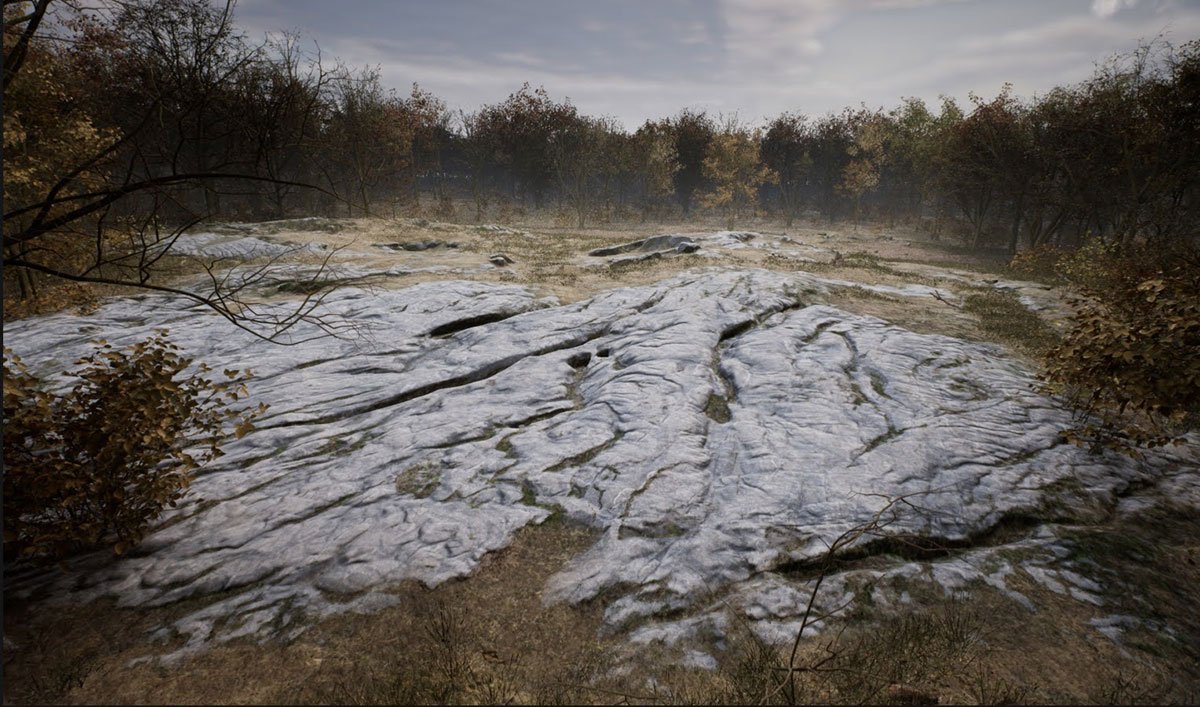
High-Accuracy Environment & Locations Scanning Services
3D Scanning for Virtual Worlds, Film Production, and Digital Replication
Our environment and locations scanning services transform real-world spaces into highly detailed 3D models for video games, film production, and virtual experiences. Using advanced photogrammetry, LiDAR, and HDRI capture, we create immersive digital environments with accurate textures, lighting, and scale. These assets are production-ready for integration into game engines, VFX workflows, and virtual production stages.
We specialize in scanning landscapes, cityscapes, interiors, and architectural locations to provide high-resolution 3D models, precise terrain mapping, and HDRI lighting references. Whether for a digital backlot, a historical recreation, or a fully interactive game world, our scans ensure seamless realism and optimization for Unreal Engine, Unity, and other industry-standard platforms.
Environment & Locations Scanning Services - Select Applications
-

3D Environments for Video Games & Open Worlds
We scan real-world locations to generate highly detailed 3D environments, enabling seamless world-building for open-world and immersive video game experiences.
-

Virtual Production & Digital Backlots
Our high-resolution 3D scans create digital sets for film and television, allowing directors to shoot scenes in fully interactive environments without location constraints.
-

VFX & CGI Environment Replication
We provide detailed 3D models of real-world locations, allowing VFX teams to integrate accurate digital landscapes, buildings, and interiors into CGI-heavy productions.
-

HDRI & 360-Degree Image Capture
We capture HDRI sky domes and 360-degree environments, ensuring realistic lighting, reflections, and global illumination in rendering workflows.
-

Digital Twins for Real-World Locations
We create precise digital replicas of locations for urban planning, architecture, and historical preservation, allowing for virtual exploration and future reference.
-

Terrain & Landscape Scanning
Using LiDAR and photogrammetry, we provide accurate terrain models and topographical data for video game environments, simulation training, and geospatial applications.
-

Interior & Set Scanning for Production Design
We scan architectural interiors and film sets, ensuring precise scene recreation, previsualization, and seamless alignment of digital assets with physical locations.
-

Virtual Location Scouting & Previsualization
Our high-resolution 3D scans allow production teams to explore locations virtually, reducing the need for on-site visits and enabling more efficient previsualization workflows.
Industry Leaders Trust MYND.
Leading game developers, filmmakers, and visual effects teams trust MYND Workshop for environment and locations scanning. Our expertise in capturing high-fidelity 3D spaces ensures that digital worlds, virtual sets, and real-world locations are reproduced with unmatched accuracy and realism.
Industries We Serve
-

Architecture, Engineering & Construction
We provide precise 3D scanning, BIM-ready data, and accurate as-built documentation to support design, construction, and renovation projects.
-

Historic Preservation
Our advanced scanning and documentation services capture every detail of historic structures to support restoration and preservation efforts.
-

Real Estate & Residential
From property documentation to detailed renovation plans, we deliver accurate scans and 3D models for real estate professionals and homeowners.
-

Art & Fabrication
We offer precise 3D scanning and modeling services to help artists, artisans and fabricators create, replicate, and innovate.
-

Media & Entertainment
From props to film sets and environments, we provide high-quality 3D scans for visual effects, gaming, and virtual production.
-

Museums & Heritage
Our scanning and digitization services preserve artifacts, artworks, and cultural heritage with exceptional detail and accuracy.
Servicing Locations Across the U.S.A.
With 10 strategic hubs across the United States, MYND Workshop's 3D laser scanning services are more accessible than ever, especially to our clients on the East and West Coasts. Our central hub in Dallas further enhances our reach, ensuring we can efficiently serve clients nationwide and even internationally, without compromising on our commitment to quality and precision.Frequently Asked Questions
-
Environment and locations scanning is the process of capturing real-world spaces as highly accurate 3D models using photogrammetry, LiDAR, and HDRI imaging for use in film, gaming, and virtual production.
-
High-resolution 3D scans of real locations allow filmmakers to create digital backlots, replace physical sets, and integrate real-world environments into CGI productions and virtual production stages.
-
We deliver models in formats optimized for industry use, including OBJ, FBX, Alembic, and USD for game engines and VFX, along with HDRI files for lighting workflows (TIF, EXR).
-
Yes, our 3D environment models are fully compatible with Unreal Engine, Unity, and other rendering platforms, ensuring seamless integration into game and film production pipelines.
-
HDRI scans capture the real-world lighting and reflections of an environment, providing accurate illumination for CGI scenes, realistic reflections, and seamless blending of digital and live-action elements.
-
We scan a wide range of environments, including urban landscapes, forests, deserts, architectural interiors, industrial sites, and historical landmarks, ensuring versatility for any production.
-
We use high-resolution photogrammetry and LiDAR to capture detailed geometry and textures with centimeter-level accuracy, ensuring realism and usability in professional workflows.
-
Pricing depends on the location’s size, resolution requirements, and intended use. Contact us for a custom quote tailored to your production or game development needs.




























